Key Takeaways
- To enhance student interactions with community organizations in a service-learning course, Ohio State University's Sociology Department introduced mobile technology, giving its students iPads to use throughout the semester.
- Working in teams, the students helped local businesses solve specific problems, using the iPads both for in-class research and to communicate with business owners and each other.
- Far from diminishing the instructor's role, the use of iPads both enhanced that role and showed how it must change in a course heavily reliant on mobile technology.
- Course-end surveys show that students benefitted from the technology use, not only in coursework but also in terms of their confidence about using mobile devices and applications in the job market.
Andrew Martin, Associate Professor, Department of Sociology, and Lindsey Chamberlain, Assistant Director, Honors & Scholars Program, The Ohio State University
One challenge for higher education sociology is to connect students with applicable, real-world experiences. At Ohio State University (OSU), our sociology students have the research skills and statistical background to do research in a business setting, but they are not always exposed to applied experiences and networks that let them practice and refine these skills in real-world settings. Further, this lack of field experience inhibits their ability to make connections and develop resumes that will help them find desirable employment. Finally, we felt students needed exposure to the data collection and collaboration technologies they will use in the workplace.
To address these challenges, in autumn 2012 we launched a service-learning course that uses mobile technology. Here we describe how we used technology in our service-learning class to maximize student interactions with community organizations and enhance the quality of the students' social research. We found that technology has practical benefits for
- creating productive relationships with external partners;
- enhancing the quality of peer interaction among student teams; and
- facilitating data collection, storage, and sharing in a social sciences setting.
The technology also gave students the opportunity to develop technical proficiencies in a more applied, workplace-like environment.
Although mobile technology showed considerable benefits from a pedagogical standpoint, our findings indicate that it is no replacement for more traditional instructor-driven facilitation of student/partner relationships. Students' experiences and research processes were enhanced by the use of mobile technology (figure 1), but this did not diminish the instructors' role as facilitators; indeed, it enhanced that role. This finding speaks to an instructor's changed role in a class that relies heavily on mobile technology.
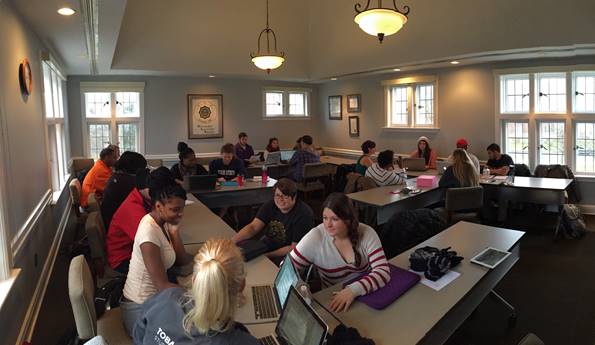
Figure 1. Students in the Sociology Department's service-learning course
Course Overview
We designed our honors-level service-learning course — Sociology 4000H: Social Science Business Collaboration: A Service Learning Approach — to help junior and senior students leverage their research skills to engage in and support a service project with a community partner, with an overall goal of bettering the local or global community.
Course Goals
Students who complete the course should understand how to
- collaborate with a local business or nonprofit organization on a service project;
- use university resources to address community issues;
- conduct hands-on data collection;
- manage a project;
- present research findings in both academic and applied settings; and
- learn while improving the local community.
The students' collaboration with the businesses culminates in a written report presented both academically and to the business leaders. We provided students with iPads to facilitate their participation. The coursework included having students collect various data — through interviews, surveys, and observations — that was relevant to the particular projects they developed in collaboration with their selected business partners. The students then created business plans and academic posters guided by social science research.
Why Mobile?
Our desire to include a mobile technology component in the course was motivated by several factors. First, because much of the coursework was done in a team setting, timely communication among team members (and with the business partner) was critical. Second, some projects required students to visit the partner's place of business to collect data. As we describe in the literature review, mobile technology as a data collection tool has become quite common in the natural sciences; we hoped to replicate those experiences in this course. Finally, we expected students to present their findings to the business partner via a multimedia presentation; using mobile technology let them develop this important workplace skill.
Projects
We team-taught a session of Sociology 4000H in spring 2013, with an enrollment of 18 students. Our students partnered with two local businesses: Rockmill Brewery and Professional Investigating and Consulting Agency, Inc. (PICA).
Students working with Rockmill Brewery were divided into three projects.
- The first project focused on raising awareness about the importance of access to clean water, especially in developing nations. Rockmill Brewery owner Matthew Barbee was particularly invested in water access issues given his emphasis on water quality for brewing beer (figure 2).
- The second student group worked with Rockmill to develop clean energy options for the brewery. This primarily involved identifying clean energy technologies employed by other small breweries and calculating their associated costs and savings.
- The third student group worked on bolstering Rockmill's social media presence. Students in this group primarily focused on how best to use Twitter and Instagram to increase advertising for the brewery and raise awareness of causes in which Barbee was financially and morally invested.
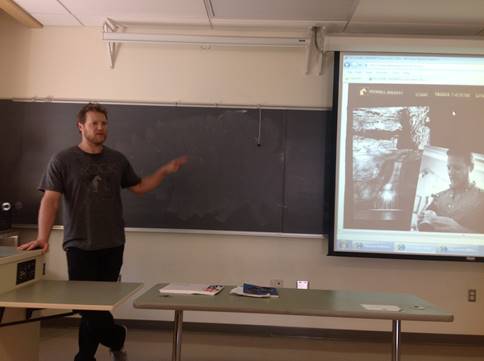
Figure 2. Rockmill Brewery owner Matthew Barbee presenting to the
service-learning class
PICA is an international security firm, and its owner, Vincent Volpi, is especially interested in intellectual property rights issues. Students working with PICA primarily focused on developing strategies for raising awareness of intellectual theft on college campuses. The project culminated in a survey that participating students administered to their fellow OSU students to gauge awareness of intellectual property and piracy issues. As with Rockmill, much of the work performed by the students was research-focused, identifying best practices for intellectual property rights and reviewing prior scholarship on the topic.
Since spring 2013, students have worked on a variety of projects, with different business partners each year. In 2013–2014, our partners were nonprofits; projects included
- delivering health care products to West Africa through direct selling options;
- developing an app to improve communication between parents and teachers;
- creating new ways to prevent drug addiction and offer addiction treatment in schools;
- fostering leadership skills among girls both in the United States and developing countries; and
- creating a ride-sharing program for college students.
In 2014–2015, students are working on various projects that focus on food access and inequality. Projects include creating urban gardens, developing a food processing plant to serve an impoverished community, and working with the local conservatory on a horticultural therapy program.
Literature Review
Mobile technology use in college education is still new, in large part because tablets have been widely available only since 2010. Most existing research focuses on classroom use of tablet devices or the use of mobile devices for research data gathering (especially for natural sciences fieldwork). An information gap exists in tablet use for research in settings with widely available network access; likewise, we have little information about tablet use during all research phases. Research about hyperconnectivity and teaching has shaped our classroom experience with mobile technology. Here, we highlight key studies in the field and how they relate to our experiences.
First, as David Parry argues, faculty must understand hyperconnectivity when using mobile technology.1 Parry encourages students to tweet and use social media during class to communicate with others. He also recognizes the danger that this "hypermediated experience" can distract from the learning environment. We support Parry's theory and give students free use of iPads during class; we also let students keep the iPads throughout the semester and encourage them to use the devices for personal purposes outside the classroom. We found that students feel more comfortable and engaged with the technology when they feel some ownership of and familiarity with the device.
Donald P. French supports additional research focusing on teaching with mobile technology, assessing outcomes beyond simple satisfaction, and finding ways to disseminate results widely. 2 He encourages instructors to share concrete examples of effective teaching techniques. This realization — that teaching techniques must change when a classroom incorporates mobile technology — was particularly salient to our work. We found that including mobile technology in the course changed our roles as course instructors (we discuss this further in the main article).
Christine Celio, Joseph Durlak, and Allison Dymnicki argue that connection to curriculum and community involvement are two of four key practices that lead to the best student outcomes in a service-learning setting.3 Adding mobile technology into our service-learning course assists both of these practices: it allows students to perform social science research in the classroom and in teams, and it facilitates relationships and communication with community partners.
In addition, the notion of social entrepreneurship is powerful in this context. Victoria Calvert argues that service-learning experiences are a continuum in which the greatest exposure levels can lead to social entrepreneur behaviors.4 Rather than performing typical volunteerism, students in our course leverage their unique talents — mainly social science research ability and experience — to better the local community. Such research and planning is greatly facilitated by mobile technology.
1. David Parry, "Mobile Perspectives: On Teaching Mobile Literacy," EDUCAUSE Review Online, April 7, 2011.
2. Donald P. French, "Society for College Science Teachers: iPods — Informative or Invasive?" Journal of College Science Teaching, Vol. 36, No. 1 (September 2006): 58–59.
3. Christine Celio, Joseph Curlak, and Allison Dymnicki, "A Meta-Analysis of the Impact of Service-Learning on Students," Journal of Experiential Education, vol. 34, no. 2, 2011, pp. 164–181.
4. Victoria Calvert, "Service Learning to Social Entrepreneurship: A Continuum of Action Learning," Journal of Higher Education Theory and Practice, vol. 11, no. 2 (2011): 118–129.
Implementing Mobile Technology
To introduce mobile technology to the course, we took several key steps. First, we met with education technology professionals and discussed best practices for iPad use in collaboration, note taking, and data collection. We created a list of suggested apps for the students to download, but did not require it and did not pre-load the apps on their iPads. On the first day of class, we distributed iPads to students in pairs; students switched iPad possession weekly with their partners. We recorded both the device's serial number and OSU equipment ID number along with the students' names. Students also signed a liability form, taking responsibility for their iPad.
We told students to explore the iPads inside and outside of the classroom, encouraging them to use the device for both coursework and nonacademic purposes. We also discussed security and privacy best practices for sharing the iPad. We then asked the students to work with their partner to identify apps that would be most useful in the course. They then shared their findings and suggestions. Each working group (consisting of three iPad pairs) downloaded the same apps.
During the next class meeting education technology professionals from Digital First at Ohio State offered a class presentation on basic iPad usage, security, and commonly used apps for collaboration and data collection.
Assessment Highlights
We administered a survey at the first course's conclusion to measure student attitudes about skill development and learning technologies. As the box "Course Survey Questions" shows, the survey included a four-point Likert scale that let students report their feelings about using technology for various outcomes, including connecting with instructors, collaborating, and collecting data. Fifteen students took the survey. Also, OSU's digital education team mediated a digitally recorded focus group for us; we were not present, as the goal was to encourage candid responses. In the following, we describe some of the key results of our assessments.
Course Survey Questions
Following are the survey questions we asked our students at the end of our first service-learning course.
Age:
- Younger than 18
- 18–21
- 22–25
- 26–35
- Older than 35
Gender:
- Female
- Male
Ethnicity:
- African American
- Asian
- Asian American
- Caucasian
- Latino/Hispanic
- Native American
- Pacific Islander
- Other
First-generation college student?
- Yes
- No
Please indicate your major: __________________________
Please indicate your current student status:
- First year in college
- Sophomore in college
- Junior in college
- Senior in college
- Bachelor's degree
- Some graduate school
- Master's degree
- Ph.D.
Please indicate which devices you currently own:
- Android tablet
- Android phone
- iPhone
- iPod touch
- iPad
- Kindle
- Microsoft Surface
- Nook
Since completing this course, how would describe your opinion on the following statements (SA = Strongly Agree, A = Agree, D = Disagree, SD = Strongly Disagree) (Note: "mobile technology" here refers to handheld or tablet devices):
- I am comfortable using mobile technology for classroom work.
- I have used mobile technology to access course materials.
- I have the skills necessary to collaborate with my classmates using mobile technology.
- I have the skills necessary to collaborate with community partners using mobile technology.
- I have the skills necessary to engage with my instructors using mobile technology.
- I have the skills necessary to use mobile technology for presentations.
- I have the skills necessary to use cloud technology as a tool in my coursework.
- I have the skills necessary to use collaborative note taking as a tool in my coursework.
- I have the skills necessary to research new concepts using mobile technology.
- My current mobile technology skillset adequately prepares me for future employment or internship opportunities.
Please tell us your opinion (using SA, A, D, or SD) on the following statements:
- The training I received prepared me to use the iPad in this course.
- iPads improved my productivity in this course.
- iPads were a meaningful tool for course projects.
- Based on the technology use, I would recommend this course to others.
- Because of this experience, I will look for courses using iPads in the future.
Please indicate the app you used in the course ________________
- This app was useful for this course
- I would use this app again
Social Science Research
Results indicated that the project was generally a success. Students said they benefitted from receiving quick feedback and advice on the processes of creating a multimedia presentation for the business owners and an academic presentation for their department and the university. The course's projects included a proposal of best practices for using green energy to drive business, a plan for integrating a company into the local foods movement, and the creation of a survey to investigate Internet security awareness among college students.
Students used the iPads to conduct, compile, and present their research (using applications such as Survey Monkey, dwellr [http://www.census.gov/mobile/dwellr/], Google Analytics, and Haiku Deck). The survey results showed that most students had a positive experience with mobile technology in the course and felt comfortable using it to collaborate with their classmates. Students also felt the course helped prepare them for future employment.
The Service-Learning Process
Our students successfully collaborated with two local businesses on research projects that addressed challenges facing each firm. The technology (along with commonly used applications EverNote and Google Drive) let students collect data easily and collaborate with both their own team members and the business owners.
Technology use facilitated close collaboration among the business leaders, students, and instructors — particularly when in-person meetings were not possible — which helped the instructors develop closer relationships with the business owners and gave students additional networking opportunities. Students met often with the business owners and sent them regular electronic updates for feedback. This continual communication positively affected both the business owners' and the students' relationship with each other and the department. Students presented the business owners with a final written report and presentation, and also presented their findings to the department and at OSU's undergraduate poster forum.
Practical Skills for Students
Students used screen-based technology throughout the course to facilitate research and communications. As a result, students specifically learned to present their findings using multimedia — an increasingly high-value skill in the business world. Students also investigated new collaborative tools that the iPads made possible. They reported extremely positive results in this regard, noting that they would feel confident using these skills in the workplace. Figure 3 shows an example of a poster the students created for the Denman Undergraduate Research Forum, a large university competition that allows undergraduate students to present their research projects to faculty, staff, and industry judges.
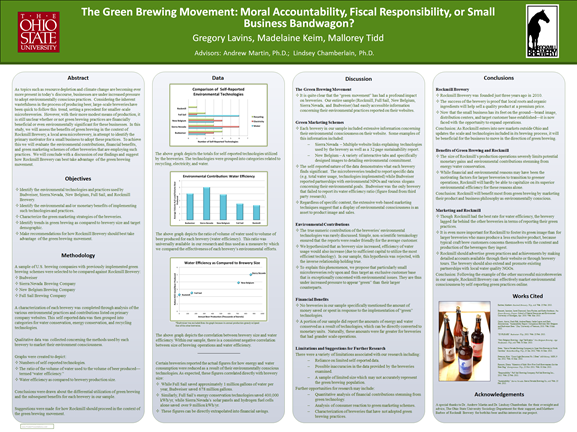
Figure 3. Research poster based on coursework presented at Denman Undergraduate
Research Forum
The Instructor's Changing Role
As the instructors, we met regularly with the business owners to get their feedback on the projects and process, as well as to troubleshoot any issues.
Incorporating mobile technology into the classroom offered us several new opportunities and challenges as instructors. First, as we noted earlier, mobile technology allowed greater communication between the student teams and their business partners. However, this benefit also produced some unforeseen challenges: communication between the student team and business partner was fragmented, and individual students would contact the partner directly with specific questions, which sometimes resulted in an overload of e-mails for the partner. To address this, we asked each team to pick a contact person who was solely responsible for e-mailing the team's questions to the partner.
Second, students became frustrated when the business partner did not respond quickly to their questions. We saw this as an opportunity to teach students about business communication and temper their expectations for immediate response. Teams are now required to collaborate with their business partners to create a communication "check-in" schedule that suits the business partner. Occasionally, we have had to contact unresponsive business partners directly, but having a clear communication schedule has generally worked well.
Related to this, students have little experience communicating professionally — as one of the business partners noted. To address this, we now hold a brief seminar at the beginning of each semester on appropriate professional communication.
Finally, when considerable work is done in a team setting, an unequal division of labor among team members is possible. To address this, we encouraged team members unable to attend regular meetings to use mobile technology to check in with their team. We also required students to write a team assessment paper describing the contributions of everyone on the team, including themselves, which also helped us monitor the team's division of labor. Figure 4 shows students collaborating on research using mobile technology.
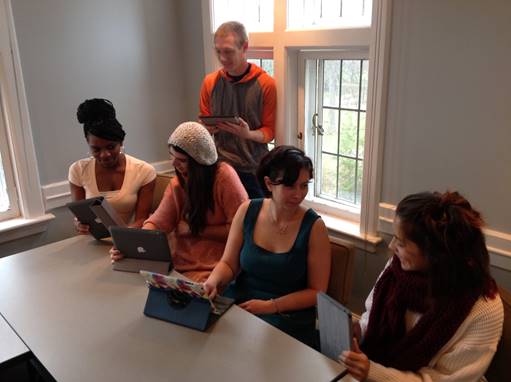
Figure 4. Sociology 4000H students doing in-class research on their iPads
Reflections
Students used the iPads inside and outside of the classroom and learned a great deal about apps and collaboration. Some students greatly appreciated the freedom to choose their own apps, while others wanted more guidance. Overall, students felt that the course and the technology greatly benefitted them in terms of improving their comfort level with technology and their readiness to use it in the workplace.
The use of mobile technology in the course also created a need for increased instructor guidance, however, both in terms of the specific apps students used and the ways in which mobile technology facilitated communication with the business partner.
Given our experiences and the student feedback, we identified two clear opportunities for improvement. First, although the experience was overwhelmingly positive, students found that sharing the iPads made collaboration and full use of the device somewhat difficult. As one student remarked, "When half the group has the iPad and half the group doesn't, it was a little hard to access [EverNote]." When discussing the collaboration challenges, one student noted that, for collaboration to truly work, "everyone needs an iPad." Another student said, "You need everybody to have [the iPad] if you are ever going to get the utilization of all the apps."
Second, while students generally felt comfortable using iPads, they wanted more guidance on which apps to use in the course and thought we should choose at least some of the apps initially. Discussing why his team used Gmail to collaborate, one student said that choosing a collaborative app was difficult because "we didn't really know how to use them in the first place." Another student said, "There is a disconnect for people who aren't as connected to [the iPad]." Another remarked that it would have been better "if [the instructors] could have just told us five apps to use." Finally, one student would have liked "being presented the apps, and why they are beneficial."
The course greatly benefitted the students, and yet clearly would be improved by
- increasing iPad accessibility,
- offering a tighter course structure, and
- finding additional ways to use the tablets.
For example, students might take better advantage of the iPads if we include a mobile data collection component, as other courses (typically in biological sciences or geography) have similarly used tablets.
Figure 5 presents the students responses to the following statements:
- I am comfortable using iPads for classroom work
- I comfortable collaborating with my classmates using iPads
- I am comfortable using iPads for presentations
- The experience adequately prepared me for future employment or internship opportunities
- I currently own an iPad
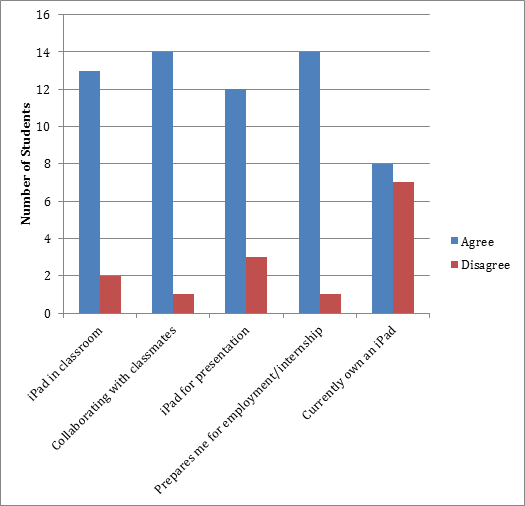
Figure 5. Select survey results on student attitudes about using an iPad
Lessons Learned
This project and its subsequent assessment have given us information on how to best implement and assess the use of mobile technology in a college-level service-learning course. The project has also shaped how we view the instructor's role in such a course and has implications for service-learning, research-based, and team-based coursework.
Specifically, we have six overarching conclusions:
- Student relationships with community partners in a service-learning setting can be powerfully enhanced by mobile technology — but this enhancement requires instructor facilitation.
- Students and instructors must find a balance between structure and the freedom to explore mobile technology. Assessments show that students wanted instructors to provide initial guidance on apps by giving them a list of suggested apps and requiring them to use some of those apps.
- Mobile technology access greatly benefits student learning and research in social science, and iPads could support every phase of research activity.
- Contrary to the conventional wisdom that tablets are more suited to content consumption than content creation, iPads proved highly effective for compositional and creative activities.
- Teamwork is greatly facilitated by mobile technology. It not only lets students easily collaborate on and share documents, but also offers them real-time research capabilities in the classroom setting.
- Finally, increased instructor guidance is needed to help students manage the increased connectivity that mobile technology facilitates, both with business partners and peer team members.
We hope to continue to use what we have learned from this experience to enhance student success, encourage social entrepreneurship, and adapt our teaching methods to the opportunities afforded by mobile technology.
Acknowledgments
This research was supported by an OSU Office of Distance Education and eLearning Digital First Impact Grant, funded by WideOpen West Internet and Cable. We thank the Digital First team for all of its support on this project. We also thank Vincent Volpi and Matthew Barbee for collaborating with and mentoring our students.
© 2015 Andrew Martin and Lindsey Joyce Chamberlain. The text of this EDUCAUSE Review article is licensed under the Creative Commons Attribution-NonCommercial-NoDerivs 4.0 license.
